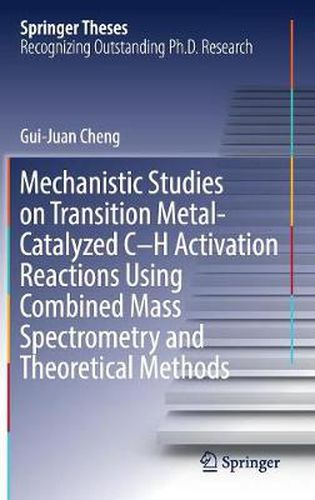Readings Newsletter
Become a Readings Member to make your shopping experience even easier.
Sign in or sign up for free!
You’re not far away from qualifying for FREE standard shipping within Australia
You’ve qualified for FREE standard shipping within Australia
The cart is loading…






This title is printed to order. This book may have been self-published. If so, we cannot guarantee the quality of the content. In the main most books will have gone through the editing process however some may not. We therefore suggest that you be aware of this before ordering this book. If in doubt check either the author or publisher’s details as we are unable to accept any returns unless they are faulty. Please contact us if you have any questions.
This thesis presents detailed mechanistic studies on a series of important C-H activation reactions using combined computational methods and mass spectrometry experiments. It also provides guidance on the design and improvement of catalysts and ligands. The reactions investigated include: (i) a nitrile-containing template-assisted meta-selective C-H activation, (ii) Pd/mono-N-protected amino acid (MPAA) catalyzed meta-selective C-H activation, (iii) Pd/MPAA catalyzed asymmetric C-H activation reactions, and (iv) Cu-catalyzed sp3 C-H cross-dehydrogenative-coupling reaction.
The book reports on a novel dimeric Pd-M (M = Pd or Ag) model for reaction (i), which successfully explains the meta-selectivity observed experimentally. For reaction (ii), with a combined DFT/MS method, the author successfully reveals the roles of MPAA ligands and a new C-H activation mechanism, which accounts for the improved reactivity and high meta-selectivity and opens new avenues for ligand design. She subsequently applies ion-mobility mass spectrometry to capture and separate the [Pd(MPAA)(substrate)] complex at different stages for the first time, providing support for the internal-base model for reaction (iii). Employing DFT studies, she then establishes a chirality relay model that can be widely applied to MPAA-assisted asymmetric C-H activation reactions. Lastly, for reaction (iv) the author conducts detailed computational studies on several plausible pathways for Cu/O2 and Cu/TBHP systems and finds a reliable method for calculating the single electron transfer (SET) process on the basis of benchmark studies.
$9.00 standard shipping within Australia
FREE standard shipping within Australia for orders over $100.00
Express & International shipping calculated at checkout
This title is printed to order. This book may have been self-published. If so, we cannot guarantee the quality of the content. In the main most books will have gone through the editing process however some may not. We therefore suggest that you be aware of this before ordering this book. If in doubt check either the author or publisher’s details as we are unable to accept any returns unless they are faulty. Please contact us if you have any questions.
This thesis presents detailed mechanistic studies on a series of important C-H activation reactions using combined computational methods and mass spectrometry experiments. It also provides guidance on the design and improvement of catalysts and ligands. The reactions investigated include: (i) a nitrile-containing template-assisted meta-selective C-H activation, (ii) Pd/mono-N-protected amino acid (MPAA) catalyzed meta-selective C-H activation, (iii) Pd/MPAA catalyzed asymmetric C-H activation reactions, and (iv) Cu-catalyzed sp3 C-H cross-dehydrogenative-coupling reaction.
The book reports on a novel dimeric Pd-M (M = Pd or Ag) model for reaction (i), which successfully explains the meta-selectivity observed experimentally. For reaction (ii), with a combined DFT/MS method, the author successfully reveals the roles of MPAA ligands and a new C-H activation mechanism, which accounts for the improved reactivity and high meta-selectivity and opens new avenues for ligand design. She subsequently applies ion-mobility mass spectrometry to capture and separate the [Pd(MPAA)(substrate)] complex at different stages for the first time, providing support for the internal-base model for reaction (iii). Employing DFT studies, she then establishes a chirality relay model that can be widely applied to MPAA-assisted asymmetric C-H activation reactions. Lastly, for reaction (iv) the author conducts detailed computational studies on several plausible pathways for Cu/O2 and Cu/TBHP systems and finds a reliable method for calculating the single electron transfer (SET) process on the basis of benchmark studies.